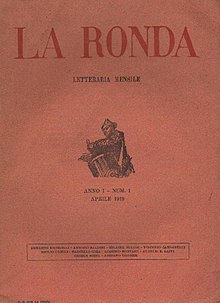페시어
Fessi dialect| 페시어 | |
|---|---|
| 페시 아랍어 | |
| 원어민 | 모로코 |
| 아라비아 문자 | |
| 언어 코드 | |
| ISO 639-3 | – |
| 글로톨로그 | fezm1238 |
The Fessi dialect (Moroccan Arabic: هضرة أهل فاس) is a dialect of Moroccan vernacular Arabic, or Darija, associated with the city of Fes, especially with the old elite families of the city.[1]It has traditionally been regarded as a prestige dialect over other forms of Moroccan Darija—particularly those seen as rural or 'arūbi (عروبي "of the rural Arabs")—due to its "association with the socio-economic power and dominance that its speakers enjoy at the national level," in the words of Mohammed Errihani.[1][2]
다른 모로코 도시 방언과 마찬가지로 "힐랄어 이전"[1]으로 여겨진다.이 맥락에서 "Pre-Hilalian"은 12세기에 시작된 바누힐랄과 바누마킬 부족이 도착하기 전에 이 지역에서 사용된 아랍어에서 유래한 것으로 믿어지는 방언을 말한다.이 사건 이후, "힐랄어" 방언은 모로코 중부의 시골 지역에서 우세해졌고 오늘날 [3]: 2–10 더 넓은 모로코 아랍어의 주요 구성요소이다.
그것은 전통적으로 독특한 언어적 특징을 가지고 있으며, 그 중 많은 것이 이 [3]: 5, 24 지역의 다른 힐랄어 이전의 방언들과 공유되었다: 음운론적 수준에서, 이것들은 우편접근사(미국식 발음 "빨간색"과 같은)의 전형적인 사용을 포함한다.또는 /valid/[1]에 대한 유성 연수개 파열음([g]) 대신 인두음화 성문 파열음 또는 무성 구개 파열음([g])을 사용한다.형태소사적 수준에서 대명사와 동사 굴절의 성별 구분은 2인칭 [1]단수에서 무력화된다.
20세기에 시작된 사회 및 인구학적 변화로 인해 도시의 오래된 엘리트들의 카사블랑카로의 이동과 같은 [4][3]: 5, 24 오래된 언어적 특징들은 오늘날 페스에서 아랍어를 구사하는 사람들의 말에서 더 이상 지배적이지 않다.20세기 후반 대부분의 유대인 거주자들이 떠나기 전, 페스의 유대인 공동체 또한 도시의 [3]: 24 [a]다른 부분과 비슷한 아랍 사투리를 사용했다.
메모들
레퍼런스
- ^ a b c d e Hachimi, Atiqa (2012-05-23). "The urban and the urbane: Identities, language ideologies, and Arabic dialects in Morocco". Language in Society. 41 (3): 321–341. doi:10.1017/s0047404512000279. ISSN 0047-4045. S2CID 144607607.
- ^ Errihani, Mohammed (2016-07-28). "Language and social distinction: speaking Darija* with the right accent". The Journal of North African Studies. 21 (5): 741–764. doi:10.1080/13629387.2016.1212706. ISSN 1362-9387. S2CID 147855077.
- ^ a b c d e Heath, Jeffrey (2002). Jewish and Muslim Dialects of Moroccan Arabic. Routledge. ISBN 9780415567787.
- ^ Hachimi, Atiqa (2011). "The story of old urban vernaculars in North Africa". In Mc Laughlin, Fiona (ed.). The Languages of Urban Africa. Bloomsbury. ISBN 9781441158130.


